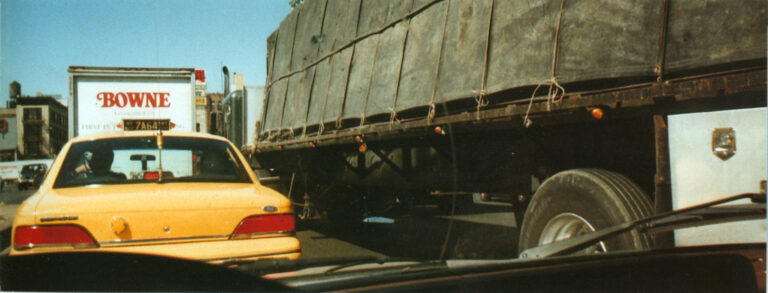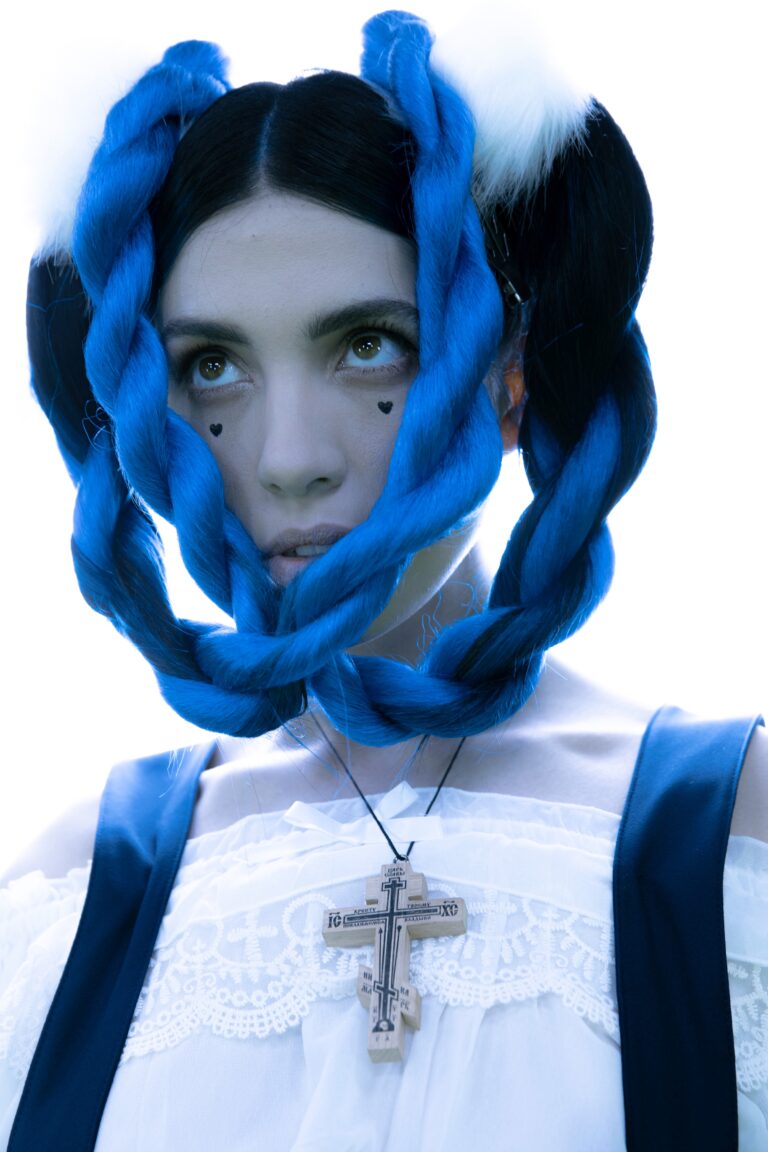Anna Fasshauer
4 MAY until 6 JUN 2025
Opening – 4 May, 12 – 6 pm
At Nagel Draxler Meseberg
Meseberger Dorfstrasse 16
16775 Gransee / OT Meseberg

Anna Fasshauer
Rumble Snuff, 2023.
Powder-coated aluminum, 268 x 230 x 150 cm
Courtesy of the artist and Galerie Nagel Draxler Berlin/Cologne
Anna Fasshauer (*1975 in Cologne) forms the material with her own physical strength into large sculptures, painted in color. Precisely expressed, she transforms material into forms that she places in space. She does not design or draw, does not commission the production. The artist produces herself, expending energy bending and flexing and reworking the large, heavy works. She improvises, the works ‚emerge in the making‘. The tension between light and heavy, solid and provisional, form and expression is unique. Yet works emerge that echo the tradition of abstract modernism as if it were a continuum.
Fasshauer graduated from the Chelsea School of Art and Design in London in 2001. She has exhibited her work in group and solo shows around the world, including venues such as Pilane, Sweden, the Jardin des Tuileries in Paris, Kunstverein Offenburg and Kunstverein Arnsberg in Germany, and the Goethe Institute in Beirut.
Martha Rosler
2 MAY until 6 JUN 2025
Opening – 2 MAY 2025, 6-9 pm
At Nagel Draxler Kabinett
Rosa-Luxemburg-Straße 33
10178 Berlin
In her series “Rights of Passage”, shot with a toy camera, Martha Rosler captures the anonymous spaces of her commute between Brooklyn and New Jersey. Bridges, overpasses, and vehicles form dreamscapes unique to our era, reflecting an economic system that binds us as transient participants. For Rosler, the road symbolizes not freedom but the stasis of modern life—epitomized by the traffic jam.

Martha Rosler
Delancey & Bowery, New York, 1995
from the series Rights of Passage, 1995-97
Color photograph
Courtesy of the artist and Galerie Nagel Draxler Berlin/Cologne
“In Martha Rosler’s Rights of Passage series, all such freedom of movement, real or conceptual, is blocked: by traffic, by the endless process of roadwork, by deteriorating surfaces and margins, by the inexorable sameness of the modern highway landscape that turns all travel into arrival at the same destination.”
– Anthony Vidler
Martha Rosler is one of the most influential political artists of her generation. Known since the 1960s for her ground-breaking (political) conceptual art positions, the artist works in video, photo-text, installation and performance, and writes critically. Her early series of photomontages are iconic works of anti-war and feminist art history. When Rosler moved to California in 1968, the Women‘s Movement was in full swing and became hugely influential to her activism and artistic practice.
Nadya Tolokonnikova
2 MAY until 6 JUN 2025
Opening – 2 MAY 2025, 6-9 pm
At Galerie Nagel Draxler
Weydingerstraße 2/4
10178 Berlin
The upcoming exhibition WANTED by Nadya Tolokonnikova (*1989 in Norilsk, Siberia) explores art as a form of defiance and survival. As an artist, activist, and creator of the feminist collective Pussy Riot, Tolokonnikova has spent over a decade challenging authoritarianism through radical artistic expression. Persecuted for her conceptual performances, she gained international recognition with Punk Prayer (2012), a protest in Moscow’s Cathedral of Christ the Saviour, which led to her imprisonment in a Russian penal colony. Since then, she has continued to use art as a weapon against oppression—through performative works, installations, objects, and music. Tolokonnikova has forged a visual language that rebels against conservative realities: anarchic, radical, yet deeply affecting. In 2024 the OK Linz museum held the first ever solo museum exhibition of the works of Nadya Tolokonnikova.

Nadya Tolokonnikova
At the center of the upcoming exhibition stands a reconstruction of Nadya Tolokonnikova‘s own prison cell — an oppressive, claustrophobic space that served as the backdrop for her two-year-long „durational performance“ of incarceration. Within the bars, she places letters, legal documents, press reports, and photographs that bear witness to the brutal conditions and psychological strain she endured.
Nadya Tolokonnikova presents a series of wall-mounted works that transform symbols of resistance into art objects. The Riot Shields, traditionally used for state control, are reimagined as artifacts of resistance, challenging the balance of power between authority and protest. Her Molotov Kits are conceived as „do-it-yourself“ protest sets, crafted from materials such as engraved birch wood, black ink, wine bottles, styrofoam, tin, and fabric. The kits feature engravings of barbed wire and Russian prison churches. In Tolokonnikovas paintings she creates her own icons, blending old Slavic calligraphy, crosses and the stylized face of a woman wearing a Pussy Riot mask, constructing a new visual language of dissent. Across these works, Tolokonnikova fuses religious iconography with revolutionary urgency, making resistance both sacred and personal.
